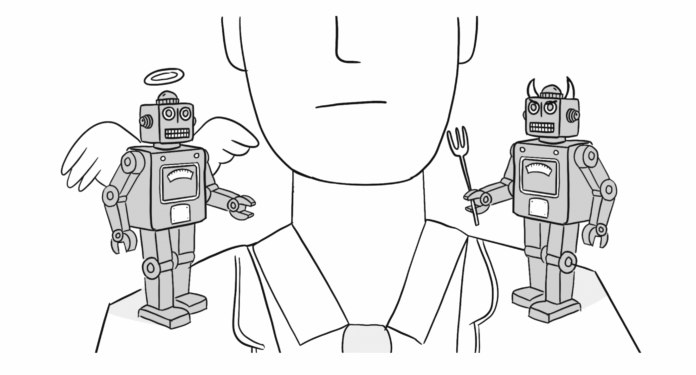I’m at Founders Forum in the Cotswolds … which they assure me is somewhere outside of London. There are a lot of Teslas and recycled Mason jars as … we’re making the world a better place. As at any gathering of the tech elite in 2023, the content could best be described as AI and the Seven Dwarves. The youth and vision toggles between inspiring moments and bouts of techno-narcissism. It’s understandable. If you tell a thirtysomething male he is Jesus Christ, he’s inclined to believe you.
The tech innovator class has an Achilles tendon that runs from their heels to their necks: They believe their press. Making a dent in the universe is so aughts. Today, membership in the Soho House of tech requires you to birth the leverage point that will alter the universe. Jack Dorsey brought low-cost credit card transactions to millions of small vendors. But he’s still not our personal Jesus, so he renamed his company Block and pushed into crypto, because bitcoin would bring “world peace.” Side note: If anybody knows @jack’s brand of edibles, Whatsapp me. Elon Musk made a great electric car, then a better rocket … and recently appointed himself Noah to shepherd humanity to an interplanetary future.
When techno-narcissism meets technology that is genuinely disruptive (vs. crypto or a headset), the hype cycle makes the jump to lightspeed. Late last year, OpenAI’s ChatGPT reached 1 million users in five days. Six months later, Congress asked its CEO if his product was going to destroy humanity. In contrast, it took Facebook 10 months to get to a million users, and it was 14 years before the CEO was hauled before Congress for damaging humanity.
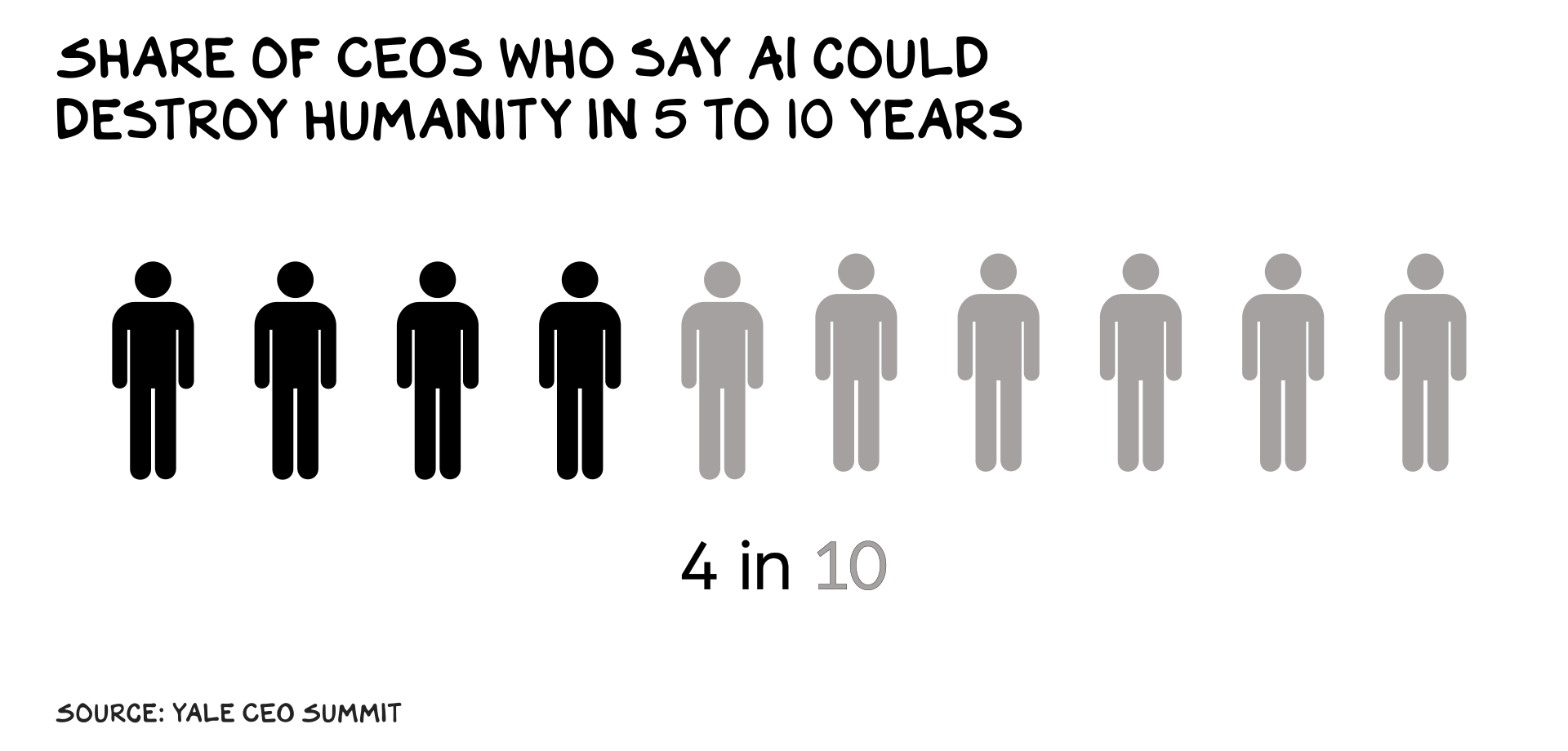
The claims are extreme, positive and negative: Solutionists pen think pieces on “Why AI Will Save the World,” while catastrophists warn us of “the risks of extinction.” These are two covers of the same song: techno-narcissism. It’s exhausting. But AI is a huge breakthrough, and the stakes are genuinely high.
Existential Egos
It’s notable today that many of the outspoken prophets of AI doom are the same people who birthed AI. Specifically, taking up all the oxygen in the AI conversation with dystopian visions of sentient AI eliminating humanity isn’t helpful. It only serves the interests of the developers of nonsentient AI, in several ways. At the simplest level, it gets attention. If you are a semifamous computer engineer who aspires to be more famous, nothing beats telling every reporter in earshot: “I’ve invented something that could destroy the world.” Partisans complain about the media’s left or right bias, but the real bias is toward spectacle. If it bleeds it leads, and nothing bleeds like the end of the world with a tortured genius at the center of the plot.
Land Grab
AI fearmongering is also a business strategy for the incumbents, who’d like the government to suppress nascent competition. OpenAI CEO Sam Altman told Congress we need an entire new federal agency to scrutinize AI models, and said he’d be happy to help them define what kinds of companies and products should get licenses (i.e., compete with OpenAI). “Licensing regimes are the death of competition in most places they operate,” says antitrust scholar and former White House senior adviser Tim Wu (total gangster). Similar to cheap capital and regulatory capture, catastrophism is an attempt to commit infanticide on emerging competition.
Real Risks
Granted, we should not ignore the dangers of AI, but the real risks are the existing incentives and amorality in tech and our ongoing inability to regulate it. The techno-catastrophists want to create a narrative that the shit coming down the pike is not the result of their actions, but the inevitable cost of progress. Just as the devil’s trick was convincing us he didn’t exist, the technologist’s sleight of hand is to absolve himself of guilt for the damage the next generation of tech leaders will levy on society.
This has been social media’s go-to for years, obfuscating their complicity in teen depression or misinformation behind a facade of technical complexity. It’s effective. Dr. Frankenstein, having lost control of Frank, should have warned “I’m worried Frank is unstable and unstoppable,” so when his monster began tossing children into lakes, he could shrug his shoulders and claim, “I told you so.”
To be clear, the monster is in fact a nondomesticated animal — it’s unpredictable. The techno-solutionists promising the end of poverty and more avocado toast, if we would just get out of their way, are not to be trusted either. AI sentience is a stretch, but there are plausible paths to horrific outcomes. Even “dumb” computer viruses have caused billions of dollars in damage.
Light Beer
My first thought, after witnessing all the hate manifest around a light beer, was that we’ll likely see AI-generated deepfakes of woke commercials produced by brands, for other brands, to inspire boycotts by extremists. As Sacha Baron Cohen said: “Democracy is dependent on shared truths, and autocracy on shared lies.” AI, like the products of many of our Big Tech firms, could widen and illuminate the path to autocracy. On a more pedestrian level, we’re going to witness a tsunami of increasingly sophisticated scams.
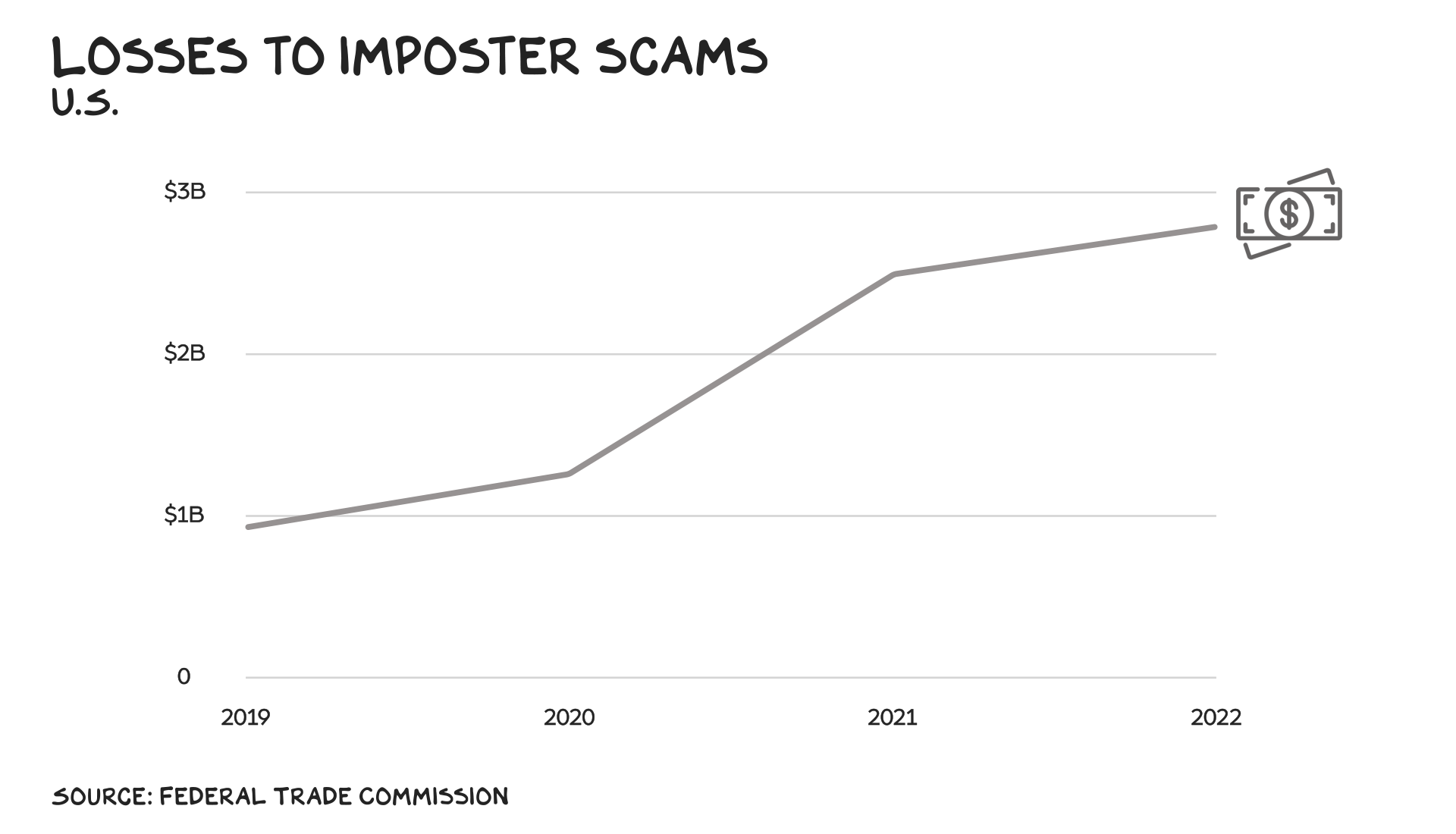
The first AI-driven externality of tectonic proportions will be the disinformation apocalypse leading up to the 2024 presidential election, and in other NATO country elections, as the war in Ukraine continues. Vladmir Putin’s grip strength is weakening: His historic miscalculation in Ukraine has left him just one get-out-of-jail-free card: Trump’s reelection. The former president has made it clear he would force Ukraine to bend the knee to Putin if he gets back in the White House.
Putin has generative AI at his disposal. Expect his Fancy Bear operation to compile lists of every pro-Biden voice on the internet and undermine their credibility with smears and whisper campaigns. Also, a barrage of deepfake videos of Biden falling down, mumbling, and generally looking like someone who’s (wait for it) going to be 86 the final year of his term. Side note: President Biden will go down as one of the great presidents, and it’s ridiculous he’s running again. Yes, I’m ageist … so is biology. But I digress. Anyway, expect information-space chaos.
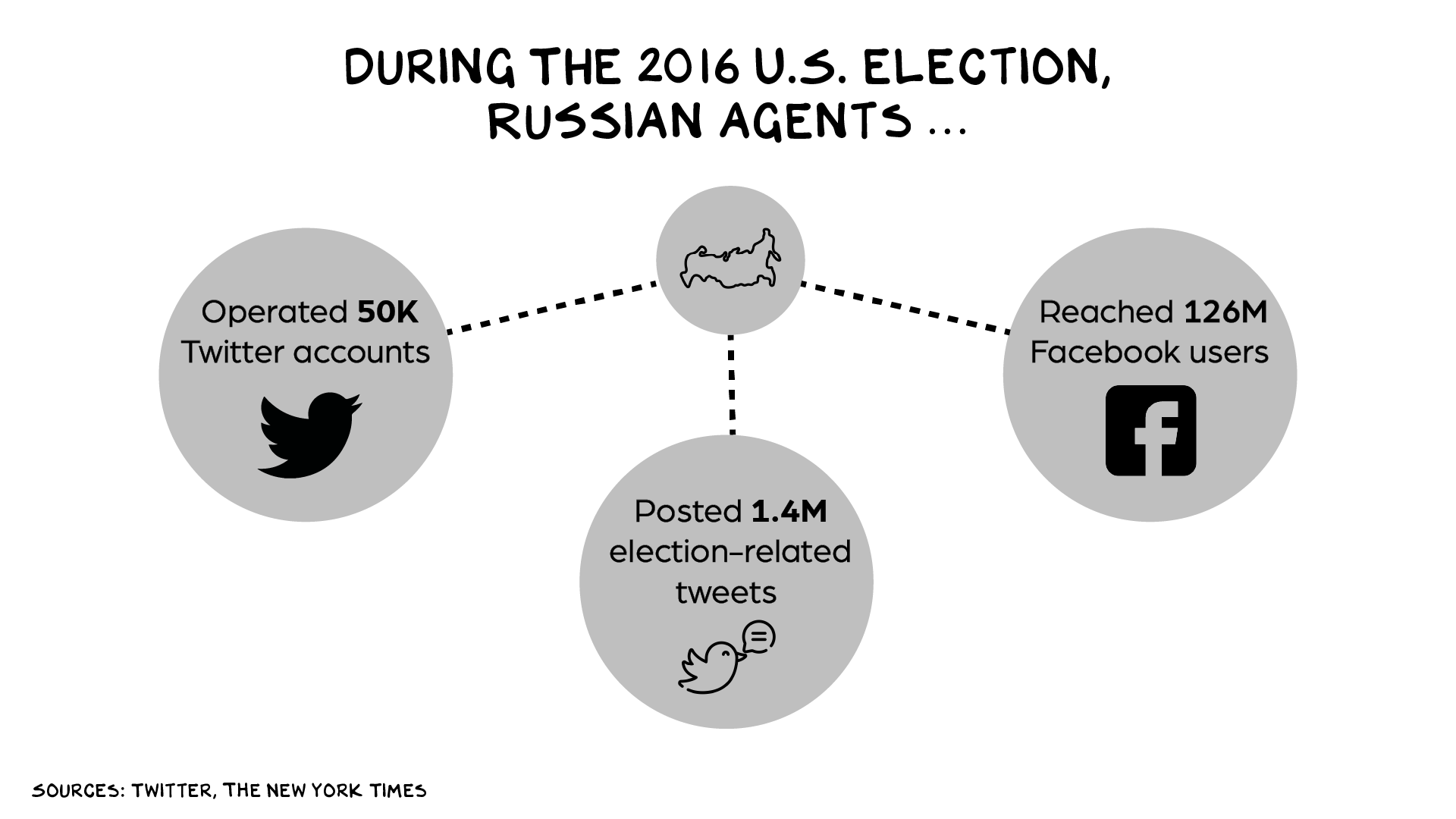
There’s more. AI has shortcomings and limitations that are causing human harm and economic costs already. Both the catastrophists and the solutionists want you to focus on sentient killer robots, because the actual AI in your phone and at your bank has shortcomings they’d rather not be blamed for.
AI systems are already responsible for a Keystone Cops record of blunders. Starting with the cops themselves — the deployment of AI to direct policing and incarceration has been shown to perpetuate and deepen racial and economic inequities. Other examples seem lighthearted, and then insidious. For example, a commercially available résumé-screening AI places the greatest weight on two candidate characteristics: “the name Jared, and whether they played high school lacrosse.” These systems are nearly impenetrable (it required an audit to suss out the model’s obsession with Jared) — who knows what names or hobbies the AI was putting in the “no” pile? Amazon scientists spent years trying to develop a custom AI résumé screener but abandoned it when they couldn’t engineer out the system’s inherent bias toward male applicants, an artifact of the male-dominated data set the system had been trained on: Amazon’s own employee base. AI driving directions plot courses into lakes, and systems for assessing skin cancer risk return false positives when there’s a ruler in the photo.
Generative AI systems (e.g. ChatGPT, Midjourney) have problems too. Ask an image-generating AI for a picture of an architect, and you’ll almost certainly get a white man. Ask for “social worker,” and the systems are likely to produce a woman of color. Plus, they make stuff up. Two lawyers recently had to go before a federal judge and apologize for submitting a brief with fake citations they’d unwittingly included after asking ChatGPT to find cases. It’s easy to dismiss such an error as a lazy or foolish mistake, and it was, but we are all sometimes lazy and/or foolish, and technology is supposed to improve our quality of life, vs. nudge us into professional suicide.
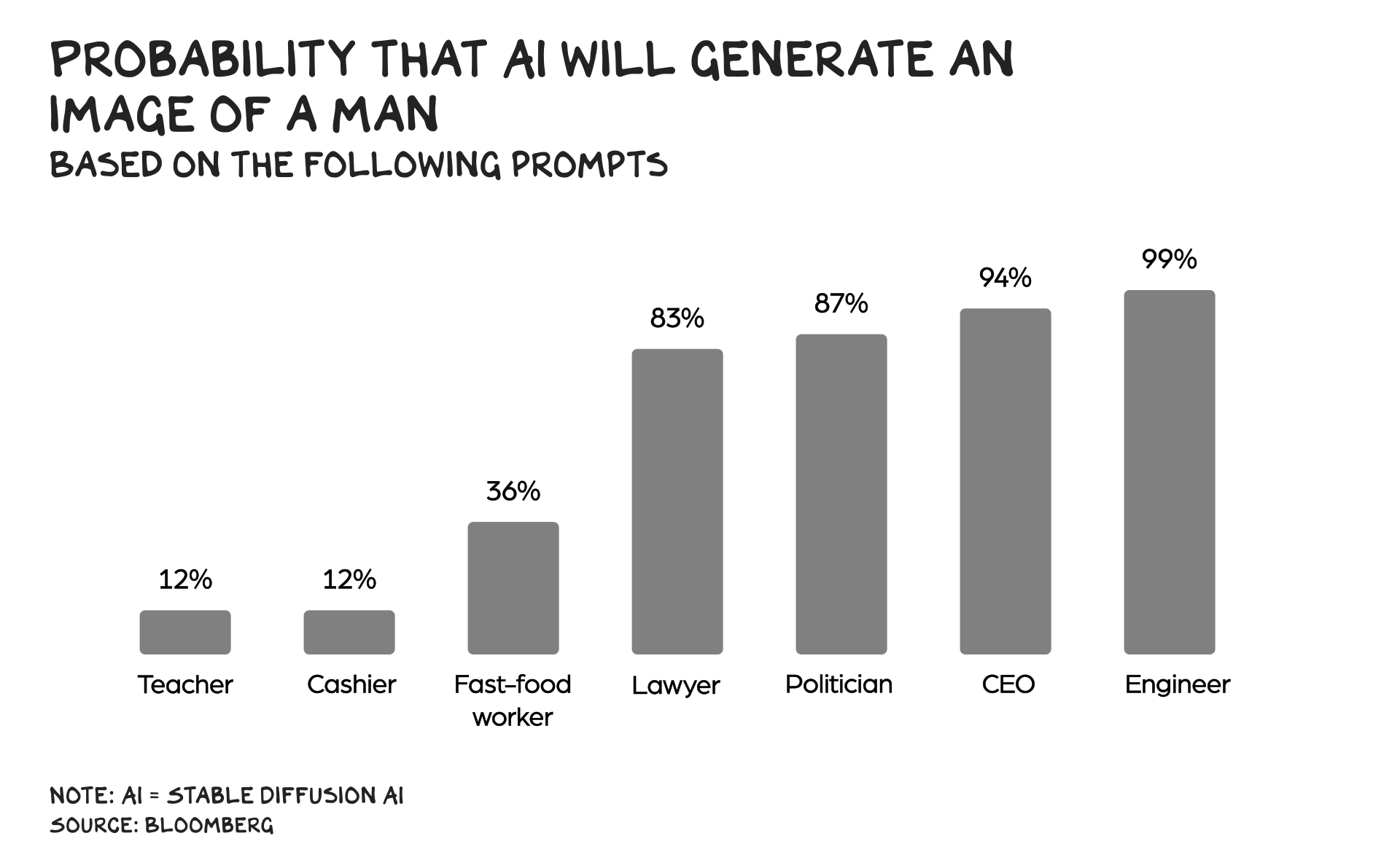
Second-Order Effects
Over the long term, productivity enhancements create jobs. In 1760, when Richard Arkwright invented cotton-spinning machinery, there were 2,700 weavers in England and another 5,200 using spinning wheels — 7,900 total. Twenty-seven years later, 320,000 total workers had jobs in the industry, a 4,400% increase.
However, the path to job creation is job destruction, sometimes societally disruptive job destruction — those 2,700 hand weavers found themselves out of work and possessing an expired skill set. A world of automated trucks and warehouses is a better world, except for truck drivers and warehouse workers. Automation has already eliminated millions of manufacturing jobs, and it’s projected to get rid of hundreds of millions of other jobs by the end of the decade. If we don’t want to add fuel to the fire of demagoguery and deaths of despair, we need to create safety nets and opportunities for the people whose jobs are displaced by AI. The previous sentence seems obvious, and yet …
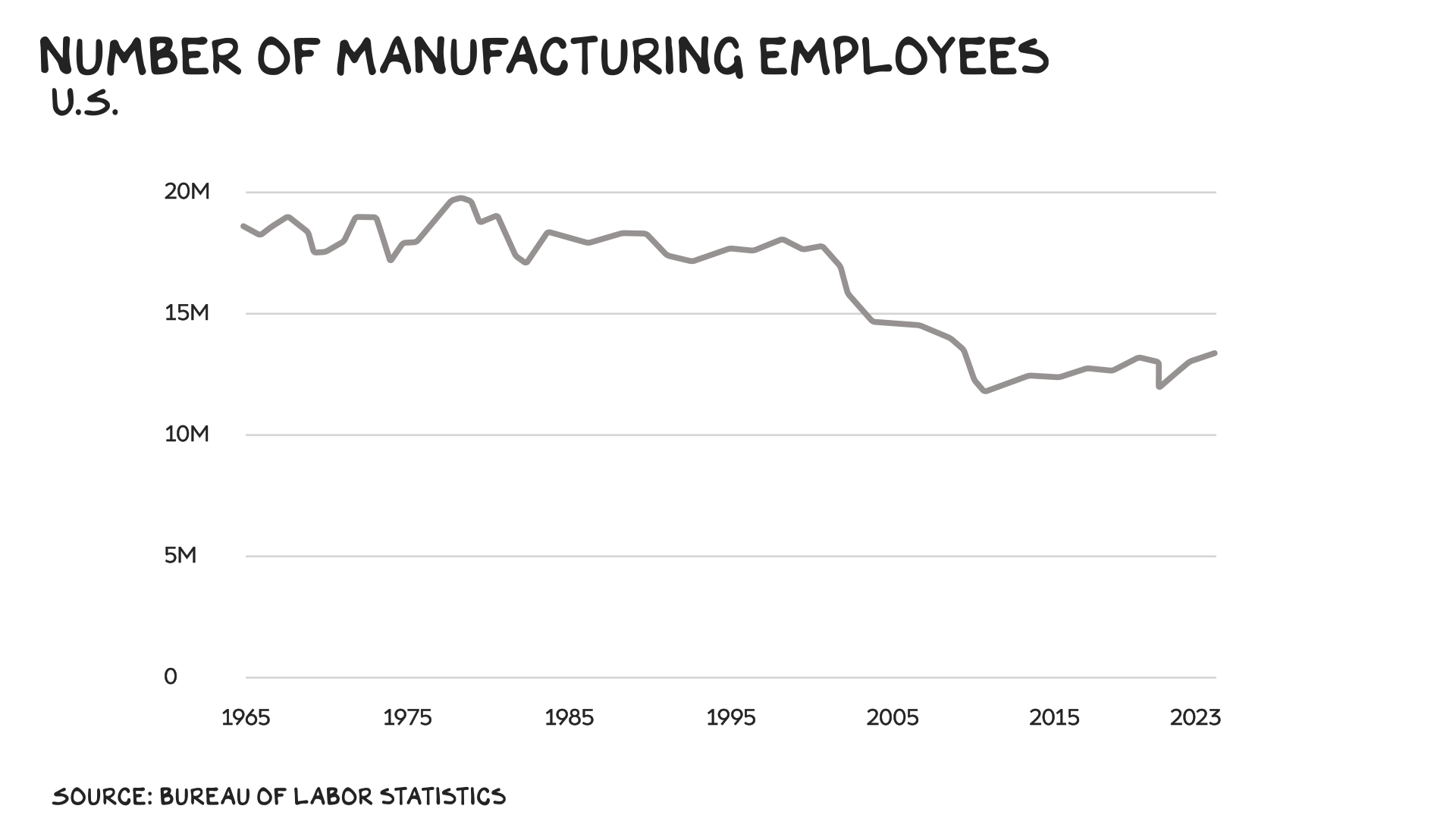
My greatest fear about AI, however, is that it is social media 2.0. Meaning it accelerates our echo-chamber partisanship and further segregates us from one another. AI life coaches, friends, and girlfriends are all in the works. (Disclosure: we’re working on an AI Prof G, which means it will likely start raining frogs soon.) The humanization of technology walks hand in hand with the dehumanization of humanity. Less talking, less touching, less mating. Then affix to our faces a one-pound hunk of glass, steel, and semiconductor chips, and you have crossed the chasm to a devolution in the species. Maybe this is supposed to happen, because we’re getting too powerful, and other species are punching back. Shit, I don’t know.
Techno-Realism
In sum, AI is here and generating real value/promise. It’s imperfect and hard to get right. We don’t know how to get AI systems to do exactly what we want them to do, and in many cases we don’t understand how they do what they’re doing. Bad actors are ready, willing, and able to leverage AI to speedball their criminal conduct, and many projects with the best intentions will backfire. AI, similar to other innovations, will have a dark side. What’s true of kids is true of tech: bigger kids, bigger problems. And this kid, at 2 years old, is 7 feet tall.
The good news, I believe, is that we can do this. We haven’t had a nuclear detonation against a human target in 80 years, not because the fear of nuclear holocaust created a “moral panic,” but because we did the work. World leaders reached across geographic and societal divides to shape agreements that defused tensions and risks when nukes and bioweapons became feasible — in no small part thanks to huge public pressure organized and pushed forward by activists.
The Strategic Arms Reduction Treaty that de-risked U.S.-Russian conflict throughout the ’90s wasn’t just an agreement but an investment that cost half a billion dollars per year. All but four of the world’s nations have signed the Treaty on the Non-Proliferation of Nuclear Weapons. Blinding laser weapons, though devastatingly effective, are banned. So are mustard gas, bacteriological weapons, and cluster bombs. Our species’ superpower (cooperation) isn’t focused only on weapons. In the 1970s the world spent $300 million ($1.1 billion today) to successfully eradicate smallpox, which killed millions over thousands of years. Across domains, we come together to solve hard problems when we have the requisite vision and will.
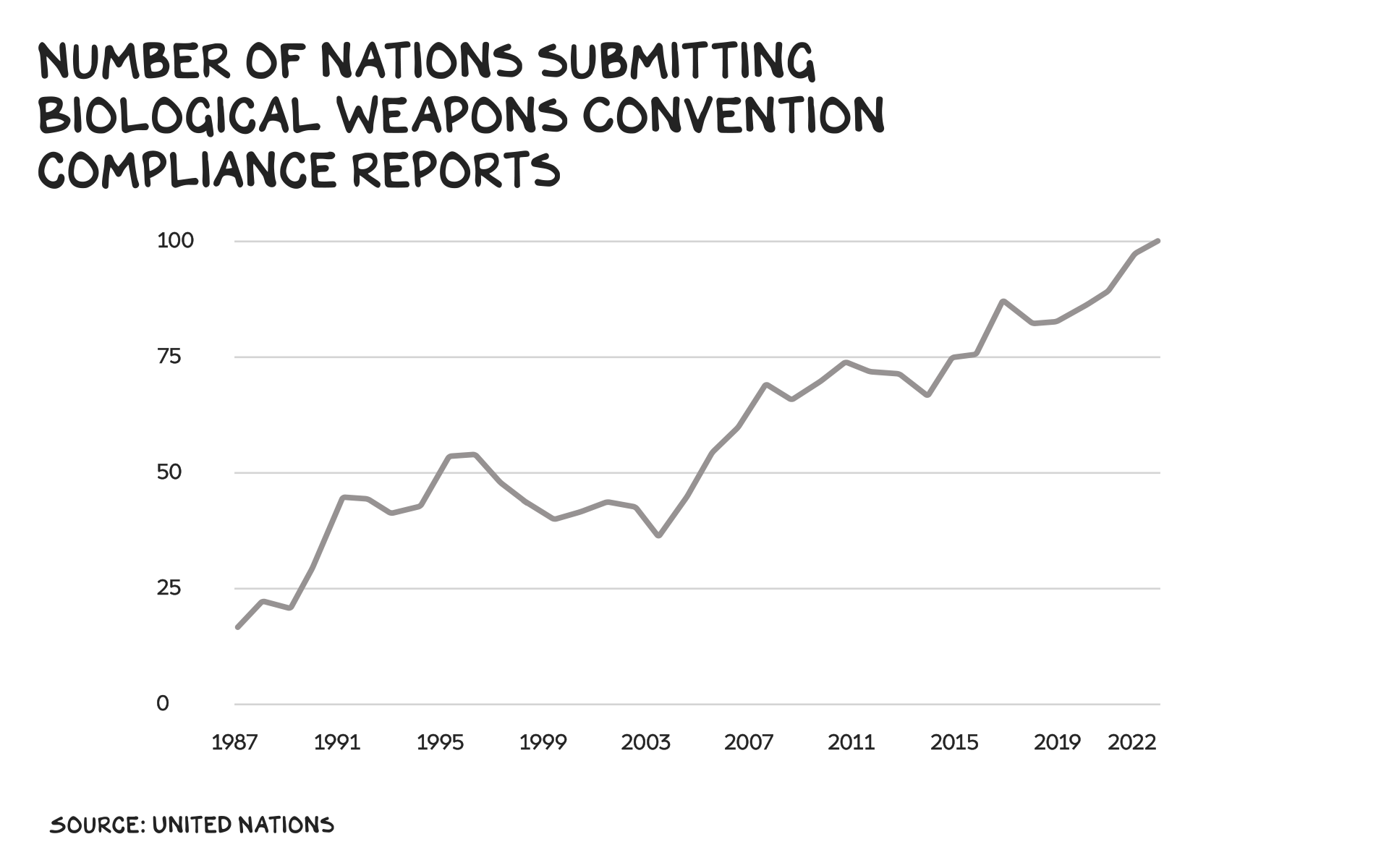
Technology changes our lives, but typically not in the ways we anticipate. The future isn’t going to look like Terminator or The Jetsons. Real outcomes are never the extremes of the futurists. They are messy, multifaceted, and, by the time they work their way through the digestive tract of society, more boring than anticipated. And our efforts to get the best from technology and reduce its harms are not clean or simple. We aren’t going to wish a regulatory body into existence, nor should we trust seemingly earnest tech leaders to get this one right. I believe that the threat of AI does not come from the AI itself, but that amoral tech executives and befuddled elected leaders are unable to create incentives and deterrents that further the well-being of society. We don’t need an AI pause, we need better business models … and more perp walks.
Life is so rich,
![]()
P.S. This week on the Prof G Pod, I was joined by Ian Bremmer, president and founder of Eurasia Group. We talked China, U.S. diplomacy, and Ukraine’s counteroffensive — listen here.
P.P.S. If you’re wondering how you should be using AI at work, join our new Generative AI Business Strategy workshop on July 27 at 12 p.m. ET. Sign up here.


